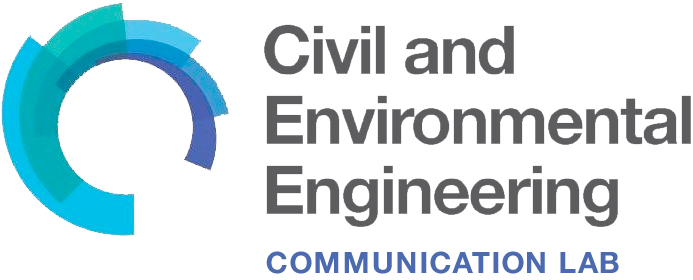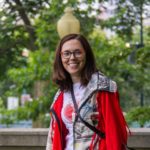Whether you’re considering, preparing for, or in the midst of applying for faculty positions, the faculty job search can be daunting. For many of us, this process means several rounds of applications, with anywhere from 20 to 80 applications each round.
Formerly a post-doctoral fellow in the MIT Concrete Sustainability Hub and Materials Systems Lab, Dr. Jasmina Burek is currently an assistant professor in the UMass-Lowell Department of Mechanical Engineering, where she teaches, heads research, and mentors future engineers and researchers.
To shed light on landing a faculty position, we asked Burek about her journey, what worked, and how the CEE Communication Lab helped her along the way.
What documents will you typically need when applying for faculty positions?
Most faculty job listings will require:
- Cover letter
- Curriculum vitae (CV)
- Research statement
- Research proposal
- Teaching statement
- Recommendation letters
More and more, listings also require a diversity, equity, and inclusion (DEI) statement. Burek found that R1 universities often ask for a DEI statement, and R2 universities ask applicants to address DEI in their cover letter rather than a separate document.
Each of these documents will have a limit of 1-5 pages (but commonly don’t exceed two pages). Ensure that you have all requested documents and that you title your documents appropriately for each application.
Research Statement and Proposal
Your research statement is where you focus on your work “from its inception,” Burek says, “while adding in a few new ideas and directions.” Burek recommends that you write about areas you have publications in or have secured grant funding for.
You can limit your past experiences to 2-3 major projects, as the entirety of your experiences will be listed in your CV. Job listings will give you hints about what each school is seeking (e.g., collaboration with machine learning). Burek says:
Your committee mainly wants to see that you have a plan. Prove your expertise. Name grants you plan to apply for. If there’s faculty in a related area, even if in a different department, mention them as a potential collaborator.
Teaching Statement
Your teaching statement is where you will expand on your teaching interests and philosophy. Burek recommends you include specific examples from teaching experiences. She emphasizes that it takes time to reflect on past experiences and that your documents keep evolving with each iteration.
Burek found it particularly helpful to have her teaching statement peer-reviewed at the BU Center for Teaching and Learning. At MIT, you can get specialized feedback at the CEE Comm Lab as well as the Teaching and Learning Lab (TLL) and Career Advising and Professional Development (CAPD).
What happens after you submit your documents?
R1 universities typically close applications in the Fall, and R2 universities close in the Spring. Burek encourages applicants to keep an open mind. If a school that you’re interested in has an opening for an area that sounds relevant, don’t overthink it—just apply!
Usually, you will hear back within 2-3 weeks after deadlines pass. Then, you will have your first 20-45 minute call with your committee. If all goes well, you will then be invited for a campus visit, which will consist of 1-2 days of 1:1s with the dean, committee chair, and faculty committee members (approximately six). Burek recounts that one school had a 30-minute pre-selection interview solely about DEI.
Campus Visits
Campus visits often include:
- A seminar (for the school or department)
- A chalk talk (for the department or committee)
In seminars, you talk about yourself and your style in teaching and mentoring, while chalk talks are about your research. Some schools might ask you to lecture instead. You’ll have less than a week to pull your materials together, but “over time,” Burek says, “it becomes easier.” The questions you’re asked are quite standard. Burek says:
Especially during seminars, chalk talks, and 1:1 talks with faculty, I was asked mostly about my future research proposals. However, if students were interviewing, they cared about teaching and DEI.
Staying connected is crucial for thriving
Burek stayed up-to-date with position openings by joining Twitter and Slack channels where applicants track positions and share interview questions.
During interviews, you might be asked if you’d like to speak with faculty in or outside the department. For these conversations, Burek recommends that you build rapport by scheduling coffee chats at conferences you attend throughout the years.
Burek also recommends that you build your brand with your social media presence. However, she says not to worry too much about your numbers of followers or citations. You might be in a small field, where journals don’t have large audiences. The quality of your work won’t be judged based on these numbers.
Resources at MIT
Among MIT-based resources, Burek made use of the Writing and Communication Center (WCC) and the CEE Comm Lab (us!). While the WCC polished her vocabulary and improved her English, Burek recounts that the CEE Comm Lab allowed her to practice all forms of science communication (even crafting tweets).
Burek used the CEE Comm Lab in early and late stages of manuscripts and application materials, and she attended our workshops and panels for grant proposals and chalk talks. However, what she found most valuable was 1:1 appointments with Comm Fellows.
To all researchers, Burek stresses the importance of taking extra care in analyzing their key messages and their narrative, to clearly articulate the real-world value of their work. She says:
This all is a very iterative process, I was building confidence, while building my skills in writing and speaking. Some days, I wouldn’t accomplish much, but I was at least challenging myself rather than putting it off. Comm Fellows and [former CEE Comm Lab Manager] Sarah Gluck supported me through a stressful year and isolation. Through connecting with and trusting them, I realized I have to treat myself with compassion.
You can follow Dr. Jasmina Burek on Twitter @JasminaBurek.
Additional resources
Check out the full collection of free CommKit Resources created by the MIT CEE Comm Lab team.

